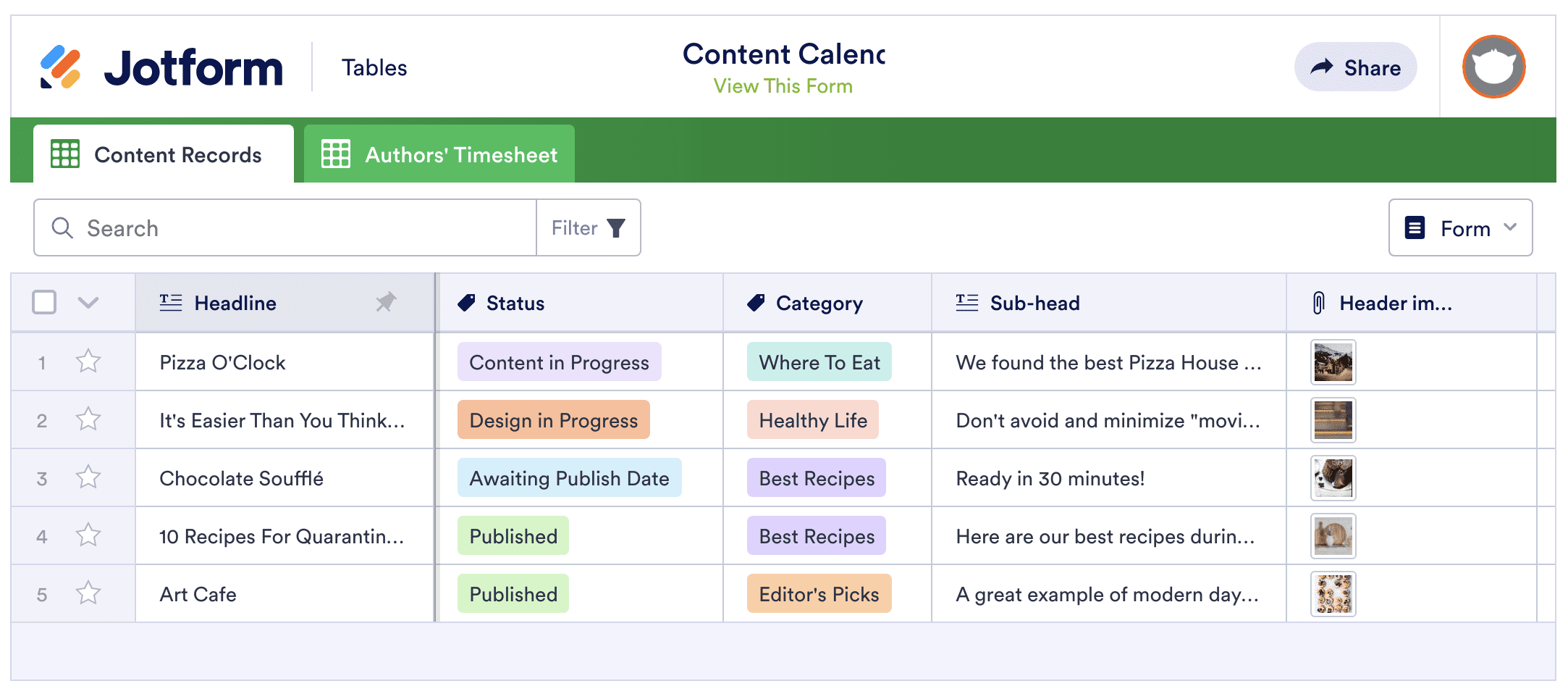Steps to create B2B content markering
- Decide what you want to accomplish
- Get to know your audience
- Come up with content ideas
- Create a content calendar
- Determine how you’ll distribute content
- Choose what to measure
In business-to-business (B2B) companies, content marketing is no longer a luxury — it’s a necessity. According to research from the Content Marketing Institute, 42 percent of organizations say their content marketing operations are mature, and 41 percent have a documented content marketing strategy.
Content marketing is as much a part of doing business as buying ad space. It’s how B2B companies educate customers and prospects about their products, and build their reputations as trusted sources of information.
The Content Marketing Institute found that the most successful companies (69 percent) have a documented strategy. This may leave organizations new to content marketing wondering how to create an effective B2B content marketing strategy. While it’s not a simple task, taking the time to craft a strategy will pay off in the long run because it will focus your efforts on what’s important.
Here’s a basic guide to creating an effective B2B content marketing strategy.
Decide what you want to accomplish
Before you create your B2B content marketing strategy, determine your goals for the program. Ultimately, the end goal will be more sales, but content marketing is about more than selling. It’s about educating customers, increasing brand awareness, and building an audience.
Here are a few goals that you can use for your own strategy:
- Build trust with your audience.
- Attract new prospects.
- Overcome prospects’ objections.
- Deepen customer loyalty.
- Increase your SEO rankings.
Once you know why you’re doing content marketing, you can create a strategy based on your goals.
Get to know your audience
No matter what your goals are for content marketing, you need to know about your audience, both your existing audience and your potential audience, to create content for them.
The best way to do this is to create profiles of your ideal customers: their job titles, their industries, their responsibilities, and their pain points. Include tidbits like gender, age, and hobbies so that you’re basically crafting a composite person to write content for. This is called a buyer persona, and it’s helpful when you’re visualizing the person that will read your content.
Additionally, talk to your sales team to find out what customers are asking them about and who is buying from them. This is where you’ll begin to identify who your best customers are, look for prospects who are like them, and pinpoint some of your customers’ problems.
Come up with content ideas
Once you know your goals and your audience, start brainstorming content ideas, including content formats. For example, if one of your content marketing goals is to increase your SEO rankings, you could consider adding a blog to your website. Then, identify topics that are relevant to the audience you’re trying to attract as well as keywords to use in the blog posts.
Keyword research can be really helpful when you’re looking for content ideas. Whether you use Google’s Keyword Planner in AdWords or another SEO tool, you can see what people are actually searching for related to your business and then create content using those keywords.
No matter what your goals are for content marketing, focus the content on your customers and audience. They will come to you for answers and advice, and you want your content to reflect that. This could be in the form of a blog post, a video tutorial, or an e-book — all great formats for your content. Realistically consider what you can accomplish, and then start planning your content.
Create a content calendar
A content calendar, also known as an editorial calendar, is an integral part of your B2B content marketing strategy. It can be as simple as a shared spreadsheet or as complex as a custom software program. At a minimum, it should include
- The title of the content
- The type of content being created (e.g., blog post, white paper, video)
- The date the first draft of the content is due
- The date the content will be published
- Any SEO keywords being used
- Who is in charge of the content
Though your content calendar will change as necessary, it will serve as a reference for you as you continue to evolve your B2B content marketing strategy.
Determine how you’ll distribute content
Your content marketing strategy isn’t complete without deciding where you’ll distribute your content. Naturally, you’ll publish it on your website, but depending on your goals, you may also want to consider
- Paid distribution, like creating Google Ads to send people to the content
- Paid social, which is similar to paid distribution, only on social media
- Sponsored content, such as in industry publications
- Sending content via email newsletters
- Promoting content on (unpaid) social media
Choose what to measure
Naturally, you’ll want to know if your content marketing is working, so choose metrics that line up with your goals. For example, if your goal is to increase your SEO reach, you might measure site traffic as it relates to the keywords you choose, as well as how many backlinks you’re getting from other sites. There are a lot of tools available to do this, but if you’re just getting started with measurement, Google Analytics will likely have what you need.
This is just a head start on what you can do to build an effective B2B content marketing strategy. As you try new types of content and new keywords, you’ll find what helps you reach your content marketing goals. There will be a lot of experimenting, but if you have a basic strategy in place, you’ll know where you want to go and be able to plot out how to get there.























Send Comment:
1 Comments:
More than a year ago
This is very good blogging . it is very useful to understand marketing. It make a good future in our life. thanks.